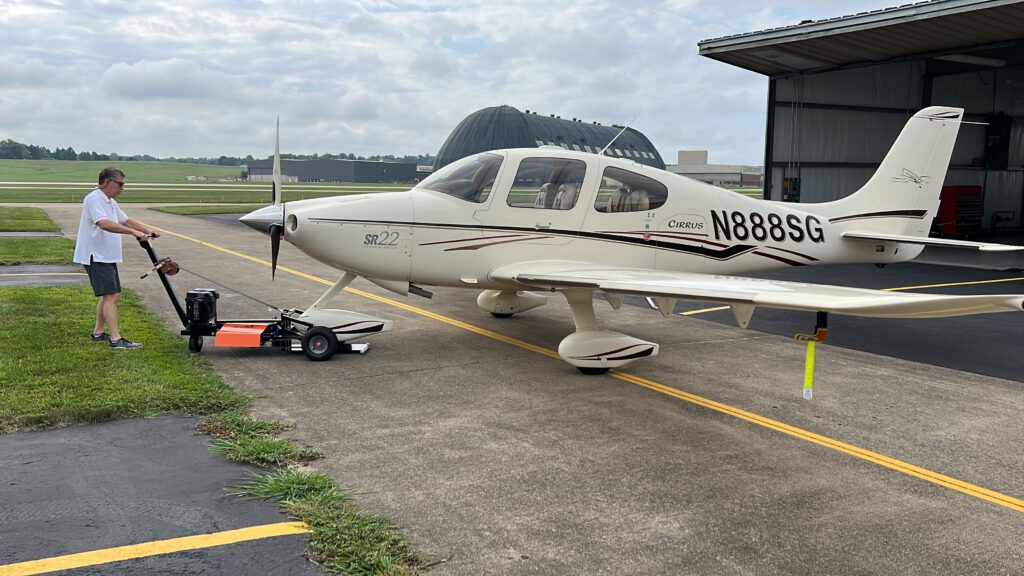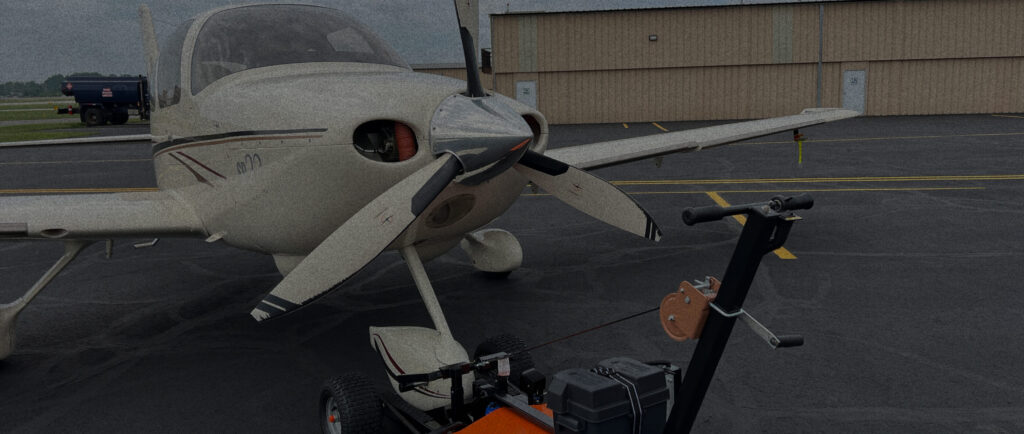Yes, our products are used to move planes, trailer, and dumpsters all around the world. However, our ecommerce website can only facilitate shipping within the United States. If you are outside of the United States, please contact us to purchase.
Please contact us with the part name or a description and/or picture of the part; once we confirm the correct part, we will take your shipping and payment information.
Most inclines up to 5-6% will work, depending on the total weight and selected unit. Our rule of thumb is that for every percentage point increase in incline, the effective total weight increases by 10%. For example, if you are moving a 7,000 lb trailer up a 3% incline, the total weight increases by 2,100 lbs (30% x 7,000 lbs) for an effective weight of 9,100 lbs. While the 7,000 lb trailer on a flat surface would work with our 8,000 lb capacity unit, moving up a 3% incline now necessitates the 15,000 lb capacity unit. We like to take a closer look at anything over 5%; please contact us for more information.
We recommend using our units on flat, solid, smooth surfaces, such as concrete or asphalt. Depending on the situation, packed gravel, and hard grass/dirt can work; in this case, we recommend getting an upgraded caster. We do not recommend use on loose gravel/gravel with large rocks, wet/muddy grass, or other soft and uneven surfaces, as the tug may have an issue gaining the necessary traction. Certain ultra-smooth surfaces, such as a polished floor, may require extra traction. Please contact us if you are unsure whether your surface is compatible with our unit.
Yes, if you need to use your tug in snow or ice, a pair of snow chains is highly recommended.
In most cases, the decision between gas and electric is based on customer preference: would you rather deal with charging and maintaining the batteries or filling up the gas motor? Other considerations include the availability of an electrical outlet, whether you are using the tug indoors or outdoors, differences in sound, use in extreme heat or cold, etc.
However, we suggest a gas unit if your use case requires very frequent/constant use throughout an extended period of time, for example, needing to move a trailer back and forth several times over the course of a few hours due to battery life limitations.
We believe we are the oldest, longest-standing manufacturer of aircraft, trailer, and dumpster tugs in existence, having built the highest-quality tugs for 50 years. We have customers that still use units that are 30-40 years old, older than most of our competitor’s companies combined. While you will likely need to replace certain parts over the years, as long as the unit is well maintained, we expect them to last a long time.
The standard casters are solid and work best on smooth, flat surfaces. If you are working on gravel, grass, or a similarly unstable surface, our upgraded casters (balloon/pneumatic, depending on the unit) are recommended to help absorb the bumps and offer further stability.
All units use 20W50 Motor Oil in the hydrostatic transmission and 10W30 Oil in the engines.
First, determine the max weight of the heaviest plane that you will be moving and the amount of incline you are working on (See: Can these move up an incline). Once you have determined the effective weight of your plane, choose the next highest capacity unit. The choice between gas and electric will mostly be up to preference (See Should I choose gas or electric for more information). If you are moving any planes with wheel fairings, you will need one of the NFE units to properly and safely attach.
Our NFE-4 and NFE-6 units will come with our NFE Attachment to connect to your wheel fairings. We actively keep stock of attachments for Cirrus, Piper, Cessna, Diamond, Columbia, and Vans aircraft. If you have a different plane not mentioned above, please contact us to see if we have an attachment for your plane.
If you have wheel fairings, the NFE Attachment will connect to the pins or above the wheel, depending on the exact unit. If you do not have fairings, our Strut Strap will wrap around the back of the nosewheel and will connect to the tug’s Winch Hook, which is then used to winch the plane onto the unit’s platform. Our J-Hook accessory allows for an easier attachment by simply attaching the hook to the nosewheel, rather than wrapping a strap around it.
Our NFE-4 and NFE-6 units are designed to work with planes both with and without fairings, using our NFE Attachment and NFE Adapter Plate, respectively. These are simple and easy to swap out as needed. Since our larger tugs are not compatible with wheel fairings, the heaviest plane cannot be heavier than 6,000 lbs for the NFE-6.
The -S, or Stationary, Units have a fixed, stationary load platform that sits close to the ground for easy loading. The -H, or Hydraulic, units have a platform that is equipped with a hydraulic jack, allowing it to be raised up to 7 inches. The raised platform lowers the plane’s tail by about double the amount that the platform is raised (i.e., raising the platform 4 inches will lower the tail approximately 8 inches), allowing the plane to maneuver under low doors or ceilings.
Generally, small lips or bumps under ~0.5” will not be an issue. If they are larger than that, please contact us so that we can evaluate further, as ramps may be needed. We suggest smoothing out bumps as much as possible, such as with a rug or mat.
Yes, with the addition of our Tailwheel Chock accessory. If you only need to move tailwheel planes, please contact us for alternative options.
Depending on their specifications, certain tricycle-gear nosewheel helicopters can be compatible with our Aircraft Tugs. Our trailer tugs can also move certain helicopter landing pads. Please contact us to discuss these options.
Yes, please contact FlightParts and us to get an aircraft tug shipped to the EU.
Yes, our 5th Wheel Super Duty Trailer Tug comes with one attachment (for 5th Wheel/Gooseneck/Anderson trailers) and one ball hitch post (1-7/8”. 2”, 2-5/16”). The attachments and ball hitches are easily interchangeable if needed.
Traction issues are most likely caused by a lack of tongue weight exerted on the unit, assuming the unit is being used on a solid, flat surface, particularly when moving up an incline. Our weight pack accessory adds about 80 lbs worth of tongue weight to the unit, with space for up to two weight packs (for a max of ~160 lbs).
Our tugs provide safety and convenience for many industrial and abnormal use cases, including the military, factories/assembly lines, food trucks, waste treatment facilities, and movie production sets. Please contact us if you have questions about compatibility with your use case.
Tongue weight capacity will vary by unit but is generally around 10% of the unit’s total weight capacity (and slightly higher for the smallest and largest units). Generally, our automatic ball lifts have slightly lower tongue weight capacities than the manual lifts. Exceeding our stated tongue weight capacities can potentially damage the unit and cause malfunctions that could potentially damage the trailer. On the flip side, the units do require a certain amount of minimum tongue weight to ensure that there’s sufficient traction.
Yes, three or more units purchased together or within short succession can apply for our bulk discounts. Please contact us to get a quote.
Yes, we offer a trial period during which you can try out a Dumpster Mover at your facility and see for yourself how it can save you time and money. Please contact us to set up a trial.
Lugging dumpsters weighing several thousand pounds around by hand is both dangerous and inefficient, often being a multi-person job. Our dumpster movers make it incredibly safe and easy for a single person to move dumpsters, saving time and protecting staff from injury, which means reducing the frequency of worker’s comp claims and thus insurance premiums.
You will need one dumpster arm per dumpster mover and one dumpster attachment per dumpster. Each dumpster mover comes with one arm and one attachment.
Can’t find what
you’re looking for?


